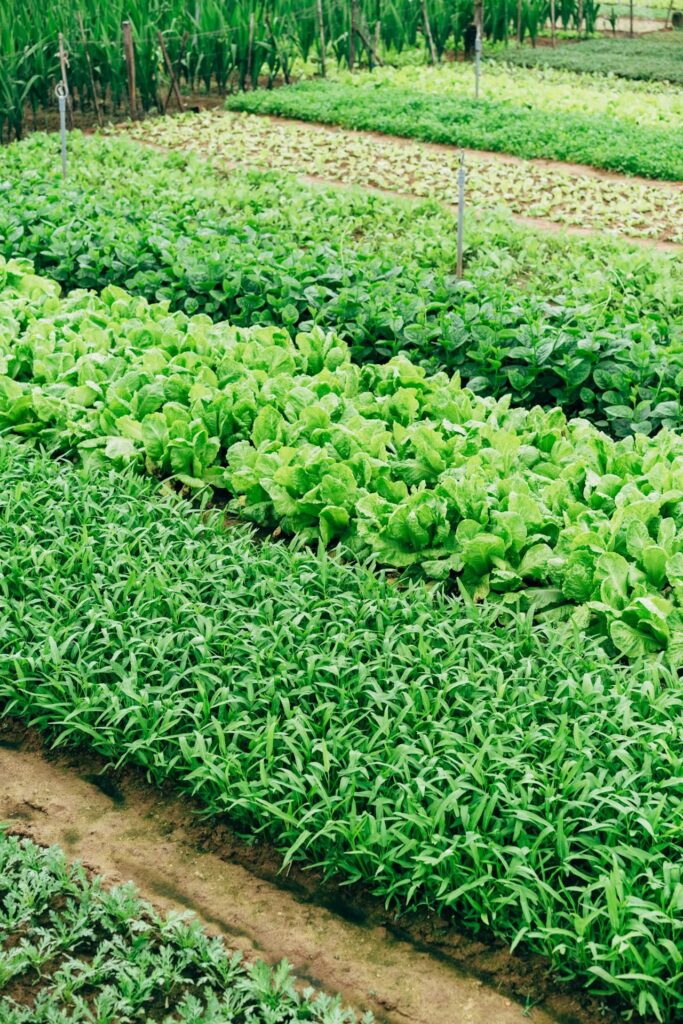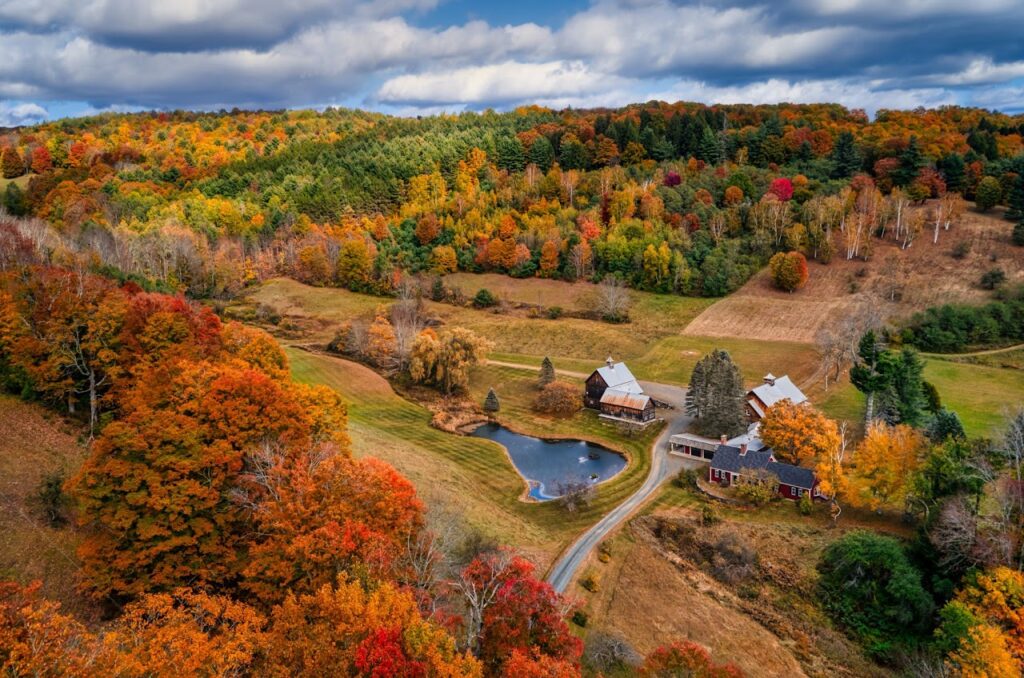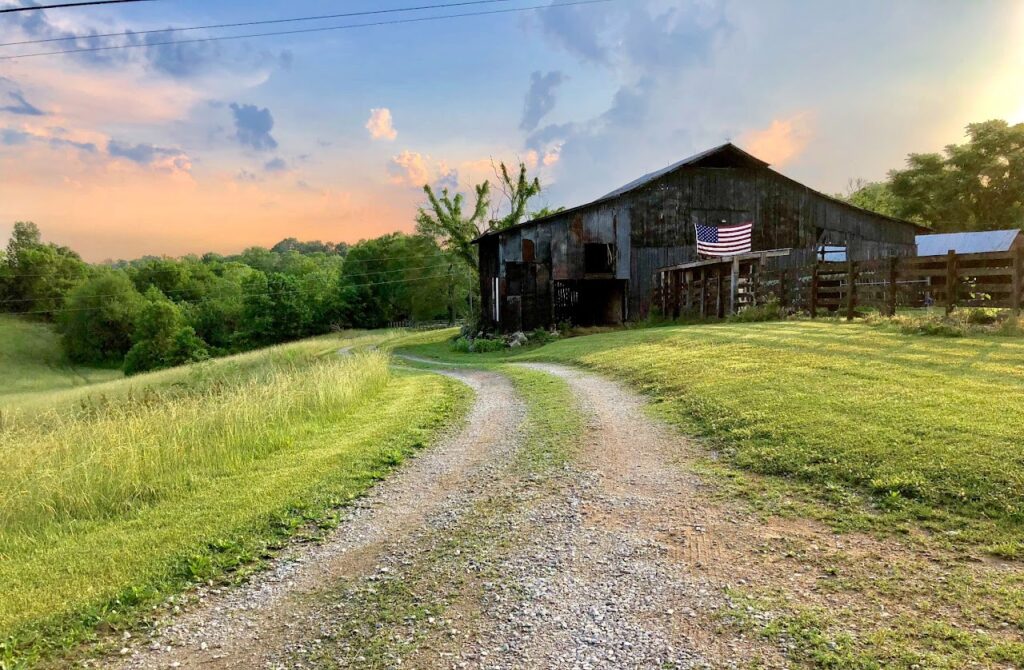Find Your Ideal Homestead Location
Embarking on a homesteading journey is an exciting endeavor that promises self-sufficiency, a deeper connection with nature, and a simpler way of life. However, choosing the right location is crucial for a successful homesteading experience. In this article, we’ll explore the best states for homesteading that offer the ideal environment for homesteading enthusiasts.
1. Oregon: The Pacific Wonderland
Nestled in the picturesque Pacific Northwest, Oregon is at the top of the list of best states for homesteading. With its mild climate, fertile soil, and abundant rainfall, it’s no wonder that Oregon ranks high on the list of homesteading-friendly states. The state’s progressive policies on land use and agriculture further make it an attractive destination for those seeking a self-sufficient lifestyle.
Key Aspects of Oregon’s Homestead-Friendly Policies
Urban Growth Boundaries (UGBs): Oregon was one of the first states in the U.S. to implement Urban Growth Boundaries. UGBs are lines that separate urban areas from rural areas and are intended to control urban sprawl and protect farmland and natural resources.
Embracing the essence of homesteading, (UGBs) emerge as a crucial tool for cities, allowing thoughtful growth while safeguarding cherished homestead and forest lands. Affordable housing initiatives open doors for more individuals to experience the fulfilling homesteading lifestyle in Oregon.
Guided by economic development analyses, local land use planners craft towns and cities conducive to long-term self-sufficiency and prosperity. Transportation planning paves the way for seamless integration with newly built roads and pathways, ensuring homesteaders have ample room to thrive. Public facilities plans guarantee essential utilities, underpinning a self-reliant, modern way of life. In sync with homesteading values, recreation planning invites residents to savor Oregon’s natural beauty, fostering a deeper connection to the land.
Oregon also has Right to Farm laws in place that protect homesteaders from nuisance lawsuits. and Farm-to-Table Initiatives promote direct sales from homesteaders to consumers.

In Oregon, there are also several programs and resources available to assist homesteaders in adopting sustainable agricultural methods. These initiatives aim to promote environmentally friendly practices, improve agricultural productivity, and support the long-term viability of homesteading operations. Some of the programs and resources include:
Oregon Department of Agriculture (ODA): The ODA offers a range of programs focused on sustainable agriculture, including grants, technical assistance, and educational resources. They provide information on conservation practices, organic farming, and more.
Natural Resources Conservation Service (NRCS): The NRCS provides technical and financial assistance to homesteaders interested in implementing conservation practices on their homesteads. This includes programs like the Environmental Quality Incentives Program (EQIP) and the Conservation Stewardship Program (CSP).
Oregon State University Extension Service: OSU Extension offers a wealth of research-based information and resources on sustainable agriculture practices. They conduct workshops, provide publications, and offer expert advice on topics like soil health, water conservation, and integrated pest management.
Small Farms Program: Run by Oregon State University, this program offers educational resources and workshops specifically designed for small-scale and sustainable homesteaders. It covers a wide range of topics, including crop diversification, marketing strategies, and sustainable production methods.
Farm-to-School Programs: Oregon has robust farm-to-school initiatives that connect local homesteaders with schools and institutions. These programs create opportunities for homesteaders to supply fresh, local produce to schools, fostering sustainable farming practices.

Oregon Organic Cropping Systems (OCCS) Project: This research initiative focuses on developing sustainable organic farming systems tailored to Oregon’s climate and agricultural conditions. It provides valuable insights and recommendations for organic growers.
Conservation Districts: Oregon has numerous conservation districts that work with homesteaders to implement conservation practices on their land. They provide technical assistance, educational programs, and access to cost-sharing programs for conservation projects.
Specialized Organizations and Associations: There are various agricultural organizations and associations in Oregon dedicated to sustainable homesteading practices. These groups often offer workshops, conferences, and networking opportunities for farmers interested in sustainability.
Local Workshops and Seminars: Many communities in Oregon host workshops, seminars, and field days focused on sustainable agriculture. These events provide hands-on learning experiences and opportunities to connect with fellow homesteaders and experts.
2. Vermont: The Green Mountain State
Vermont’s stunning landscapes and rich agricultural heritage make it an excellent choice for homesteaders. The state’s commitment to sustainable farming practices, coupled with a vibrant local food movement, gives Vermont it’s edge as one of the best states for homesteading. With a supportive community of like-minded individuals, Vermont offers a nurturing environment for those looking to embrace the homesteading lifestyle.

Key Aspects of Vermont’s Homesteading Vitality
Strong Emphasis on Small-Scale Agriculture: Vermont is home to numerous small farms and artisanal producers. These operations prioritize quality over quantity, focusing on sustainable and regenerative practices. This emphasis on small-scale farming creates a diverse and dynamic local food landscape that allows for ample money-making opportunities that make it one of the best states for homesteading.
Farmers’ Markets: Vermont boasts a rich network of farmers’ markets, where local producers gather to sell their goods directly to consumers. These markets serve as vibrant community hubs, fostering connections between homesteaders and their customers.
CSA Programs: Community Supported Agriculture (CSA) programs are popular in Vermont. They allow consumers to directly support local homesteaders by purchasing a share of the homesteader’s produce for a season. This model fosters a strong sense of community involvement and provides homesteaders with stable income.
Farm-to-Table Restaurants: Vermont’s culinary scene is deeply intertwined with the local food movement. Many restaurants and eateries in the state prioritize sourcing ingredients from nearby farms and producers. This not only supports local agriculture but also ensures that diners experience the freshest and highest-quality ingredients.
Cheesemaking Tradition: Vermont is renowned for its artisanal cheese production. The state is home to a diverse range of cheesemakers, crafting unique and award-winning cheeses. This tradition has become a cornerstone of Vermont’s local food identity. New homesteaders with experience making cheese would have ample access to networks to help sustain their homesteads in Vermont

Food Cooperatives and Buying Clubs: Vermont has a strong network of food cooperatives and buying clubs. These community-driven initiatives provide consumers with access to a wide range of local products, including fresh produce, dairy, meat, and pantry staples.
Educational Initiatives: Vermont has a thriving educational component to its local food movement. Institutions like the University of Vermont Extension and various non-profit organizations offer workshops, seminars, and educational resources for homesteaders and consumers alike. These programs focus on sustainable agriculture practices, food preservation, and more.
Supportive Policies: Vermont has implemented policies that encourage and facilitate local food production and distribution. These policies include initiatives to promote farm-to-school programs, food hubs, and initiatives that support agricultural diversification.
Collaborative Networks: Various networks and organizations in Vermont work to connect homesteaders, farmers, producers, consumers, and institutions. These collaborations strengthen the local food movement by fostering relationships, sharing knowledge, and creating opportunities for growth.
Environmental Stewardship: Many Vermont homesteaders embrace sustainable and organic farming practices, prioritizing soil health, biodiversity, and environmental conservation. This commitment to stewardship aligns with the values of the local food movement.
In summary, Vermont’s local food movement thrives due to a combination of supportive policies, a community-centric approach, and a shared commitment to sustainable agriculture. This movement not only sustains local homesteaders but also fosters a deep sense of connection between producers and consumers, ultimately contributing to the resilience and vitality of Vermont’s homesteading landscape.

3. Alaska: The Last Frontier
When it comes to the best states for homesteading and living off the grid, Alaska stands out as the quintessential frontier for those seeking a truly self-sufficient lifestyle. With its breathtaking landscapes, abundant natural resources, and pioneering spirit, Alaska offers homesteaders a unique opportunity to forge a connection with nature while cultivating a self-reliant existence.
The Appeal of Living Off-Grid in Alaska
Untamed Wilderness and Vast Open Spaces: Alaska is a land of unparalleled natural beauty, characterized by towering mountains, pristine lakes, and dense forests. For homesteaders, this vast expanse of untamed wilderness provides an opportunity to live in harmony with nature, surrounded by the sights and sounds of the wild.
Abundance of Natural Resources: Alaska is endowed with an abundance of natural resources, from freshwater streams to fertile soils. This allows homesteaders to tap into the land’s potential for sustenance and self-sufficiency. Fishing, hunting, and foraging become integral components of the homesteader’s way of life.
Energy Independence through Renewable Sources: Alaska experiences long summer days and extended periods of darkness in winter. This unique climate pattern makes it an ideal location for harnessing renewable energy sources such as solar and wind power. Off-grid homesteaders in Alaska can embrace energy independence while minimizing their environmental footprint.
Thriving Homesteading Community: Alaska is home to a thriving community of like-minded individuals who value self-sufficiency and a connection to the land. This sense of camaraderie provides support, resources, and a shared passion for homesteading, making it an ideal environment for those seeking a communal off-grid lifestyle.
Legal Protections for Off-Grid Living:
Alaska has relatively lenient regulations regarding off-grid living, allowing homesteaders the freedom to build and develop their properties according to their vision. The state recognizes the importance of self-reliance and often facilitates the process for those choosing to live off the grid.

Challenges of Off-Grid Living in Alaska
Harsh Climate Conditions: Alaska’s climate can be unforgiving, with extremely cold winters and short growing seasons. Homesteaders must be prepared for the challenges of harsh weather and take measures to ensure their homesteads are well-equipped for the demands of the environment.
Isolation and Limited Access: Many parts of Alaska are remote and not easily accessible. This isolation can present logistical challenges for obtaining supplies and medical care. Homesteaders must plan for these contingencies and establish reliable means of transportation and communication.
For those with a pioneering spirit and a desire for true self-sufficiency, Alaska stands as a wonderful state for homesteading and living off the grid. The vast wilderness, abundant resources, and supportive community create an environment where the homesteader’s vision can flourish. While challenges certainly exist, the rewards of forging a life in Alaska’s untamed frontier are immeasurable. Embracing the adventure of living off-grid in Alaska is a journey that promises not only self-reliance but also a deep, enduring connection to the land and its wild beauty.
4. Tennessee: The Volunteer State
Tennessee combines the charm of southern living with a thriving homesteading community. Embarking on a homesteading journey is a life-altering decision, and choosing one of the best states for homesteading is paramount. Tennessee, often referred to as the “Volunteer State,” stands out as an exceptional choice for homesteaders seeking fertile lands, a warm community, and a supportive environment for self-sufficiency.

Rewards of Homesteading in Tennessee
Fertile Soil and Diverse Climate: Tennessee’s diverse geography encompasses fertile valleys, rolling hills, and lush woodlands. This varied landscape makes Tennessee one of the best states for homesteading with a wide range of options for cultivation, allowing for the growth of a diverse array of crops and the raising of various livestock. Whether you’re interested in cultivating vegetables, fruits, or raising livestock, Tennessee’s soil and climate provide an ideal canvas for your homesteading dreams.
Affordable Land and Cost of Living: Compared to many other states, Tennessee offers a relatively low cost of living. This includes affordable land prices, making it accessible for aspiring homesteaders to acquire their own piece of the Volunteer State. With lower property taxes and reasonable living expenses, Tennessee provides an economically advantageous environment for those seeking a self-sustained lifestyle.
Supportive Homesteading Community: Tennessee boasts a thriving homesteading community, with like-minded individuals eager to share knowledge, resources, and camaraderie. Local homesteading organizations, workshops, and events provide opportunities for networking and learning from experienced practitioners. This sense of community fosters an environment of support and mutual growth for homesteaders.
Right-to-Farm Laws and Agricultural Support: Tennessee has robust Right to Farm laws that protect farmers from nuisance lawsuits related to normal agricultural practices. This legal framework provides homesteaders with a sense of security and confidence in their chosen way of life. Additionally, the state offers various agricultural support programs, including access to resources on sustainable farming practices and financial incentives for conservation efforts.
Abundance of Natural Resources:Tennessee is blessed with an abundance of natural resources, including ample water sources and diverse flora and fauna. These resources provide homesteaders with the necessary elements for successful self-sufficiency, from irrigation for crops to potential sources of renewable energy.
Cultural Heritage and Traditions: Tennessee’s rich cultural heritage and traditions are deeply intertwined with agriculture and self-sufficiency. Embracing these traditions can be a fulfilling aspect of homesteading in the state, allowing newcomers to connect with the land and its history.
With its fertile soil, affordable land, supportive community, and a legal framework that favors agricultural pursuits, Tennessee emerges as an ideal choice for aspiring homesteaders. The Volunteer State offers an environment where self-sufficiency can flourish, allowing individuals and families to embrace a lifestyle deeply rooted in the land. Consider Tennessee as your homesteading haven and take the first step towards a more self-reliant and fulfilling future.
 Photo by Keith Luke
Photo by Keith Luke
5. Maine: The Vacationland
Known for its rugged coastline, dense forests, and bountiful farmland, Maine is one of the best states for homesteading. The state’s commitment to sustainable agriculture and local food production align seamlessly with the principles of homesteading. Additionally, Maine’s strong sense of community and access to fresh, local resources make it an excellent choice for individuals and families looking to start their homesteading journey.
Perks Choosing Maine for Your Homestead
Abundant Natural Resources: Maine’s vast and diverse landscape offers a wealth of natural resources crucial for homesteading. From fertile soils for agriculture to extensive forests for timber and foraging, Maine provides the foundational elements for a self-reliant lifestyle. Its rich biodiversity ensures a wide range of options for sustainable living.
Moderate Climate and Growing Seasons: While Maine experiences cold winters, its moderate climate offers distinct advantages for homesteading. The growing season, typically from late spring to early fall, provides ample time to cultivate a variety of crops, including cold-hardy vegetables and fruits. Additionally, the winter season allows for strategic planning and preparation for the upcoming growing season.
Supportive Homesteading Communities: Maine boasts a thriving community of like-minded homesteaders. This supportive network provides valuable knowledge, resources, and camaraderie for those on the homesteading path. From local homesteading groups to farmers’ markets and cooperative ventures, the sense of community in Maine is unparalleled.
Low Population Density and Ample Space: With a lower population density compared to many other states, Maine offers a sense of seclusion and ample space for homesteaders to establish their self-sufficient havens. This means more room for gardens, livestock, and sustainable infrastructure, allowing for greater independence.

Access to Fresh Water: Maine is renowned for its pristine lakes, rivers, and groundwater resources. Access to clean and abundant water is a cornerstone of successful homesteading. Maine’s plentiful water sources provide for essential needs like irrigation, livestock care, and household consumption.
Agricultural Support Programs: The state of Maine offers various agricultural support programs and resources aimed at assisting farmers and homesteaders. These programs include grants, technical assistance, and educational resources to help individuals and families succeed in their homesteading endeavors.
Homesteading-Friendly Regulations: Maine’s regulatory environment is generally conducive to homesteading activities. Zoning laws and land use policies often accommodate agricultural and homesteading practices, making it easier for individuals to pursue self-sufficiency.
Conclusion
Choosing one of the best states for homesteading is a critical decision that can significantly impact your success and overall satisfaction. Whether you’re drawn to the fertile lands of Oregon, the wild frontier of Alaska, or the southern hospitality of Tennessee, each of these states offers a unique and rewarding environment for homesteading enthusiasts. Evaluate your priorities, climate preferences, and long-term goals to select the perfect state for your homesteading journey. With the right location, you’ll be well on your way to realizing your dream of a self-sufficient and fulfilling homesteading lifestyle.
Sign up for the Giggles and Gloves Newsletter below, and click here for more homesteading insights!
